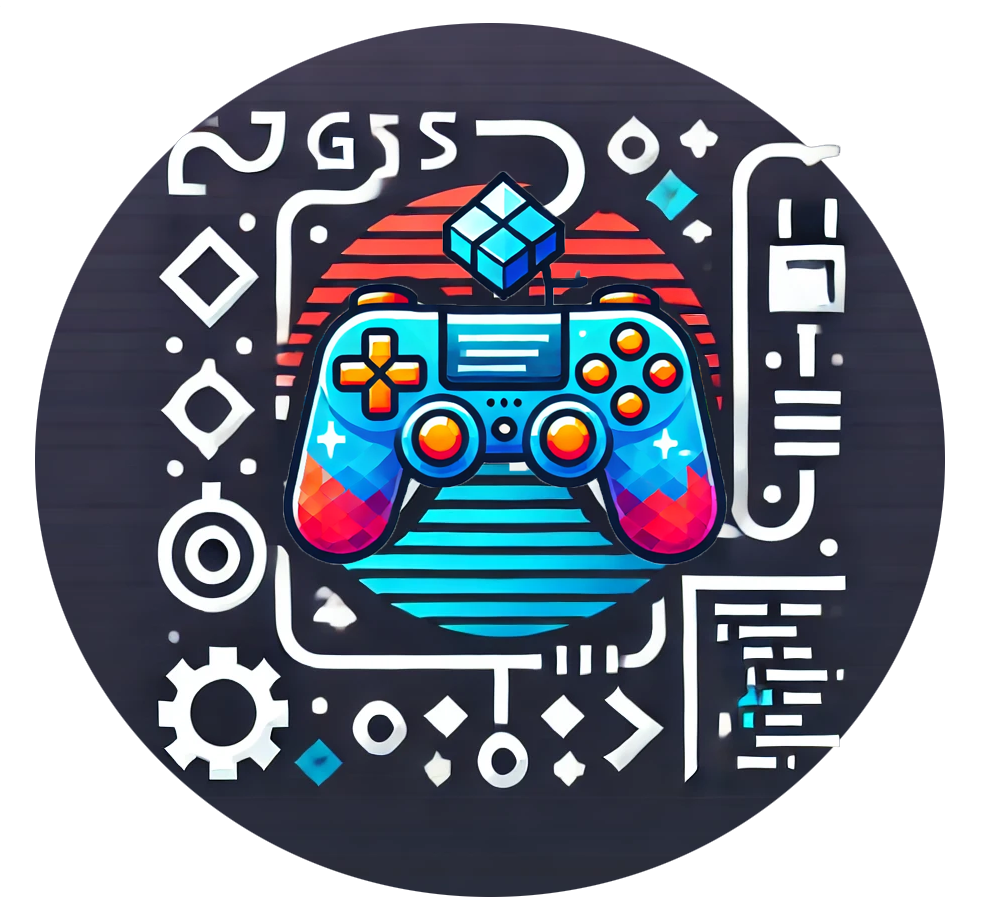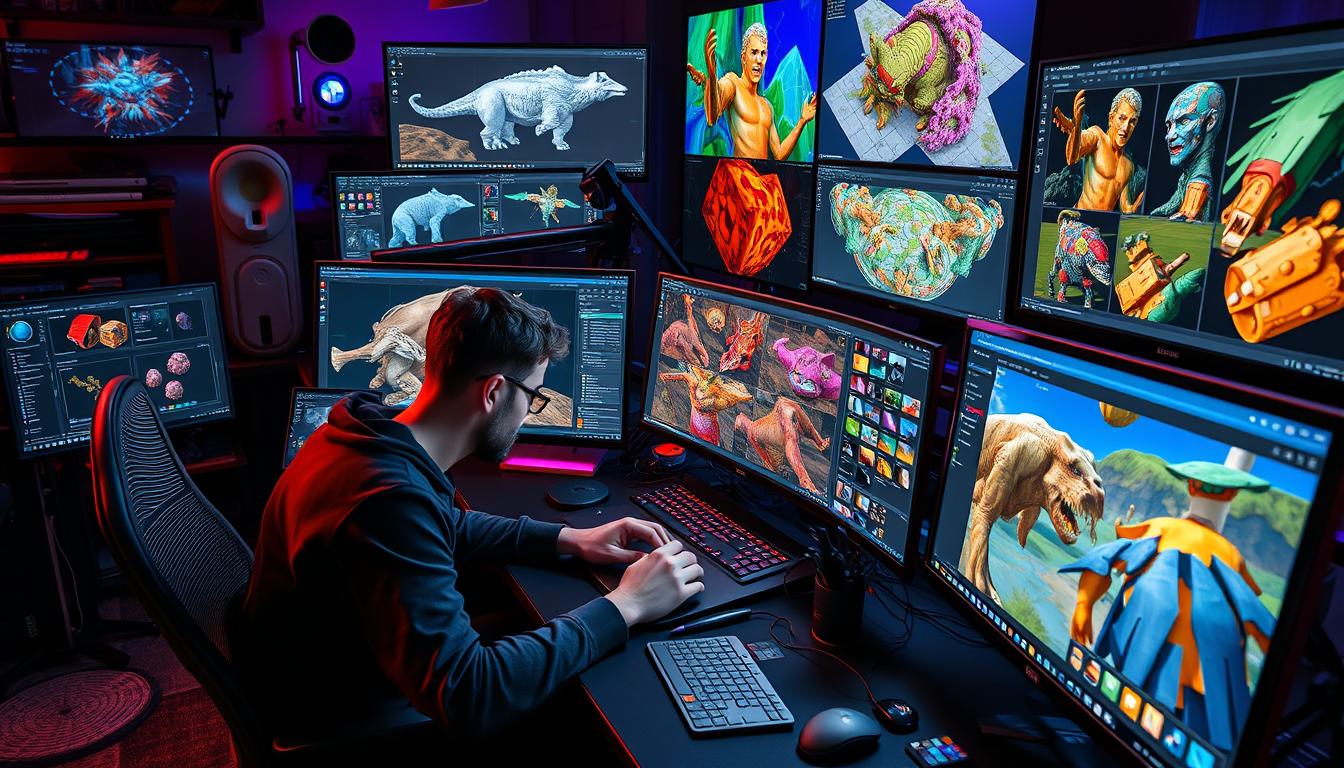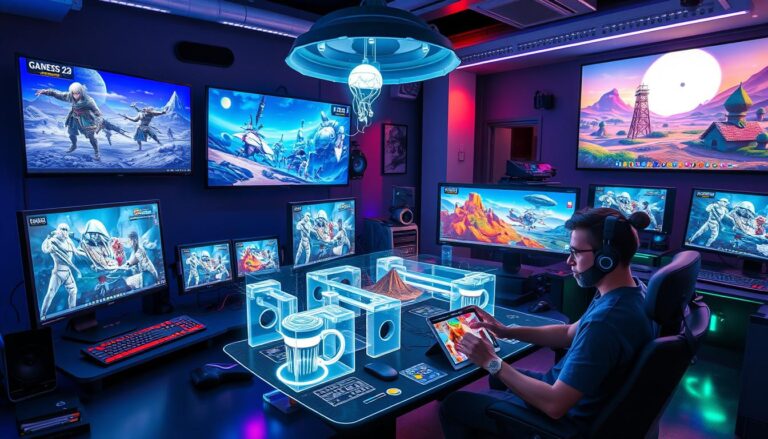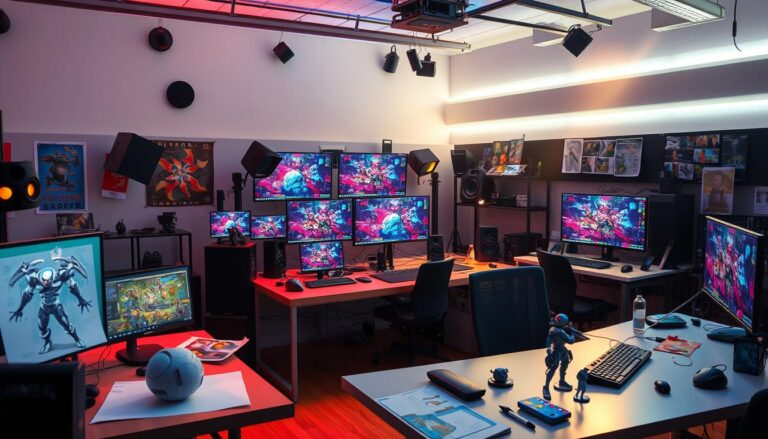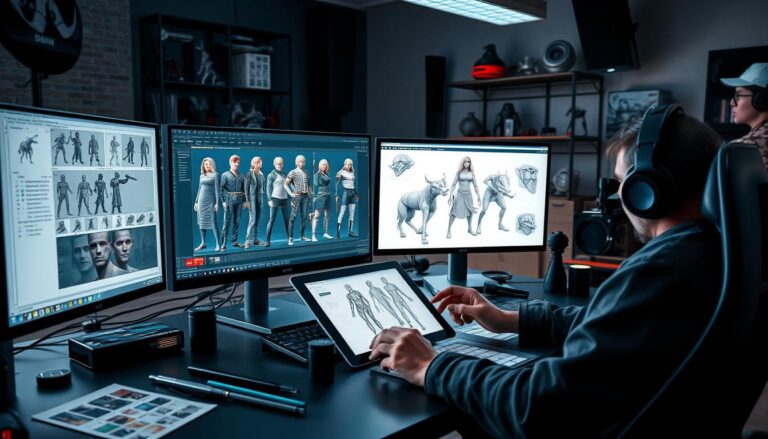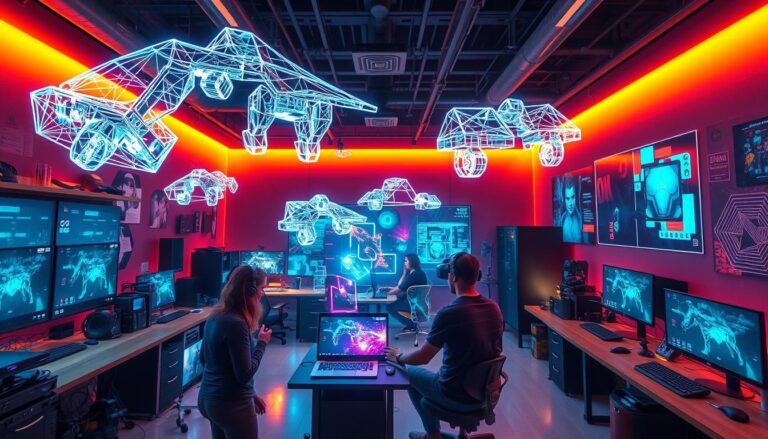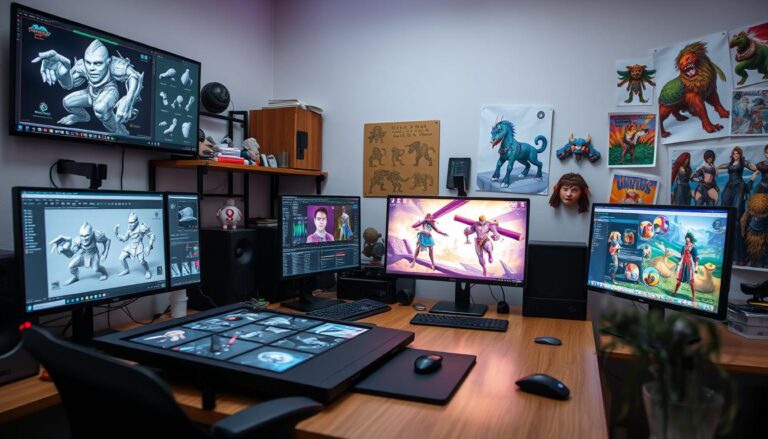What Are the Best Practices for 3D Game Art and Texturing?
In modern gaming, 3D texturing is key to better visuals. It turns simple 3D models into real-looking characters and scenes. This makes games feel more real and engaging.
Creating textures involves many steps. You need to pick the right software, prepare models, and do UV mapping and texture painting. Shading, lighting, and rendering are also important. It’s a mix of art and tech.
Physically-Based Rendering (PBR) materials make games look more real. The right textures and materials tell the game’s story. Good lighting brings out the texture details, making the game world feel more alive.
To make amazing game worlds, artists and developers must use the latest tools. Tools like Blender, Maya, 3DS Max, ZBrush, and Substance Painter are essential. They help create detailed and realistic textures.
Understanding the Fundamentals of 3D Game Art
The world of 3D game art is both captivating and crucial in the gaming industry. Textures are key in making game worlds feel real. They turn simple shapes into characters and places that players love.
There are two main types of materials in 3D game making. Basic materials focus on looks or speed. PBR (Physically-Based Rendering) materials aim for realistic looks.
Role of Textures in Game Development
Textures are vital in setting a game’s look. They help set the mood and feel of the game world. Different textures and materials tell stories and shape how players see and interact with the game.
Basic vs PBR Materials
Basic materials are for games that focus on style or speed. They use simple textures to get their look.
PBR materials aim to look like real life. They use more complex textures to create a believable look. Games aiming for realism often use PBR materials, like those in Unity3D or Unreal Engine.
Visual Storytelling Elements
Textures and materials are key in telling a game’s story. The right colors and textures can make players feel certain emotions. They can also show off a game’s style.
Using textures and materials well in level design can also guide players. It can point out important parts and make the game world look good.
Essential Software Tools for Professional Texturing
In the world of 3D Game Development, choosing the right software for texturing is key. There are top-notch apps and open-source tools that help create amazing game worlds. Let’s look at some must-have software for Unity3D and Unreal Engine projects.
Blender is a top pick for 3D texturing. It’s free and open-source, offering a wide range of features. It’s great for 3D Game Development because it’s affordable and powerful, covering modeling, texturing, and more.
For top-notch texturing, Maya is the choice. It’s known for its advanced features and making textures look real. This makes game environments look even better.
3DS Max is also popular, especially for detailed work. It’s great for architectural visualizations and games that need lots of detail.
| Software | Pricing | Key Features |
|---|---|---|
| Blender | Free | Versatile, open-source solution for 3D texturing |
| Maya | $1,700/year or $195/month | Advanced features for high-end texturing and complex projects |
| 3DS Max | $1,700/year or $195/month | Expertise in polygon modeling and texturing for game environments |
There are many other tools in the 3D Game Development world. Substance Painter, Mari, ZBrush, and 3D-Coat are some examples. These tools help developers make their textures and Unity3D or Unreal Engine projects stand out.
3D Game Development Pipeline and Workflow
Creating a hit 3D game needs a clear pipeline and workflow. It covers planning, making assets, and checking quality. Knowing this process well is key for studios to make games that players love.
Pre-production Planning
The pre-production phase is very important. It’s where you figure out the game’s scope, needs, and Game Engines to use. Good planning helps avoid surprises and makes sure resources are used well during production.
Asset Creation Process
Creating game assets is a big part of making a 3D game. This includes modeling, Rigging, and Motion Capture to make characters and scenes come alive. Game artists use tools like Maya, 3DS Max, and Blender to make Real-Time Rendering assets that pull players into the game.
Quality Assurance and Optimization
Checking the quality and performance of game assets is key. The quality assurance process tests how textures and materials work with the game’s lighting and settings. Then, optimization is used to keep visuals high while running smoothly on different player hardware.
By following best practices in the 3D game development pipeline, studios can make games that players remember. The mix of planning, asset creation, and quality checks is what makes 3D games look great and run well.
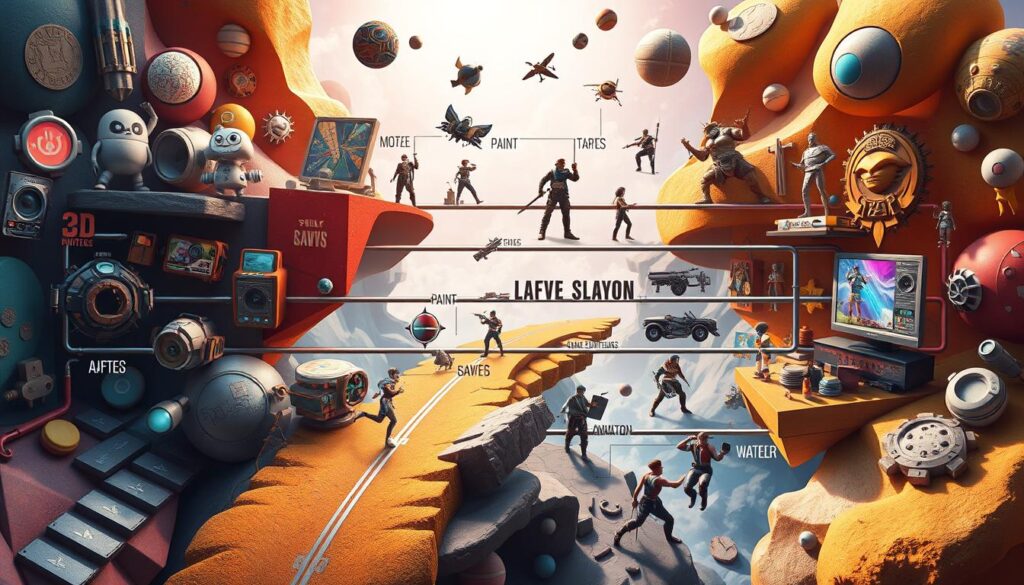
Advanced Texturing Techniques and Methods
The game development world is always growing, and artists are finding new ways to make 3D environments look amazing. They use things like procedural texturing and physically-based rendering (PBR) to create stunning visuals. These methods help make games look more real and engaging.
Procedural texturing uses algorithms to make complex textures, perfect for things like wood or stone. Layered texturing lets artists stack 2D images to create detailed surfaces. PBR texturing makes materials look like they do in real life, adding to the game’s realism.
Image-based texturing uses photos to make textures look very real. Sculpting 3D models has also improved, allowing for detailed textures. UV mapping and normal mapping are key for applying textures right and making lighting look real.
